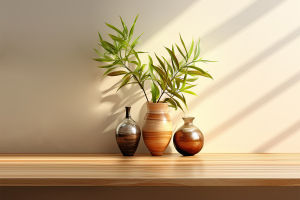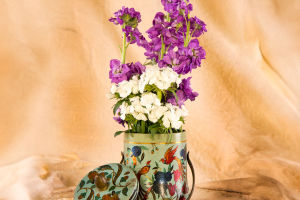Porcelain, an iconic material, originated in China and has played a crucial role in the country's history and culture.
In English, "china" is synonymous with fine porcelain, while "porcelain" generally refers to high-quality ceramic ware.
The creation of porcelain started in ancient China and eventually spread to East Asia, Europe, and beyond, due to trade and cultural exchange.
By the time of the Eastern Han Dynasty (25–220 AD), porcelain craftsmanship was refined, creating the exquisite pieces we admire today. The art of porcelain gradually spread to other parts of the world, making it an important export from China, known for its beauty and durability.
The Craftsmanship Behind Porcelain
Porcelain is made from high-quality materials like kaolin clay and porcelain stone. These materials are fired at extremely high temperatures, ranging from 1200°C to 1400°C, producing the smooth, glass-like surface characteristic of fine porcelain. During the firing process, chemical reactions within the kiln create a variety of colors and textures, making each piece unique.
One key feature of porcelain is its ability to produce a crisp, metallic sound when struck, indicating the purity of the materials. This durability and distinctiveness are what have made porcelain highly valued for centuries.
Global Influence and Legacy
China has long been the leader in porcelain production. During the Song Dynasty (960–1279), high-end porcelain was reserved for the imperial court, symbolizing wealth and luxury. Pieces such as Yue Kiln's "Secret Color" porcelain are still considered some of the finest examples of Chinese craftsmanship.
Thanks to the Maritime Silk Road, Chinese porcelain spread across Southeast Asia, South Asia, and eventually to Europe and North Africa. Porcelain became one of China's most important exports, influencing cultures worldwide.
The Fascinating World of Porcelain: From Ancient China to Modern Tables
Video by Micromenia
Porcelain in Japan and Beyond
While China was the birthplace of porcelain, Japan also developed its own porcelain culture during the Heian Period (794–1185). Over time, Japan became known for its tea culture, which greatly influenced the development of porcelain. Renowned kiln sites like the "Six Old Kilns" contributed to the creation of famous porcelain pieces used in tea ceremonies.
Porcelain's Enduring Appeal
Today, porcelain remains highly prized, both for its beauty and historical significance. Antique porcelain pieces are especially valuable, with collectors and museums around the world showcasing them. Whether used in daily life or displayed as art, porcelain continues to captivate people with its elegance and craftsmanship.
Wrapping Up
Porcelain is more than just a material—it's a symbol of cultural heritage, artistry, and trade. From ancient China to the global influence it has today, porcelain reflects the intertwining of art and commerce that shaped civilizations. We hope you enjoyed this glimpse into the world of porcelain, Lykkers!


